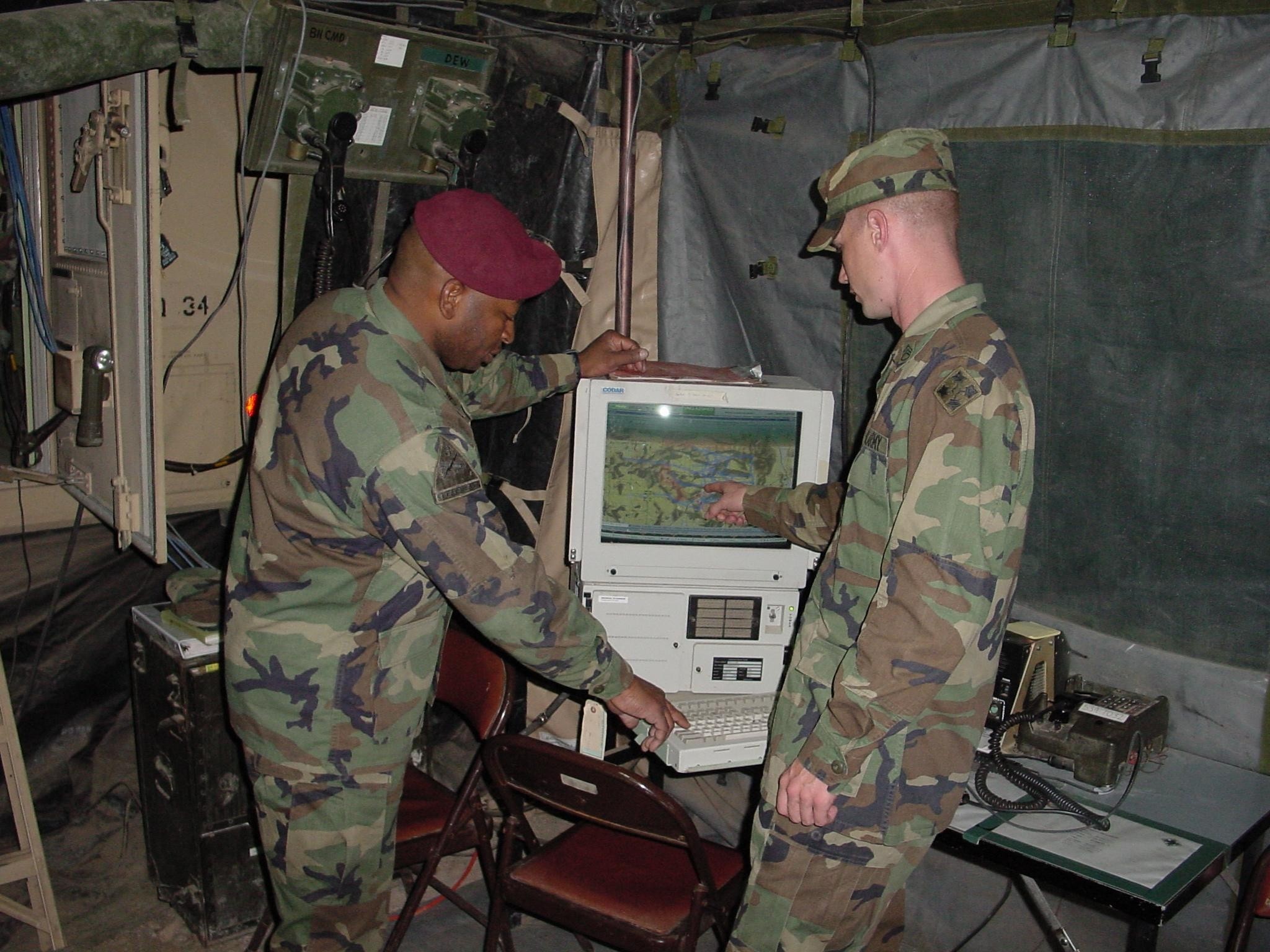When Jim Kelton was a young captain in the 1980s with the 82nd Airborne Division, it took a long time to review the hundreds of pages from the hard copy Airspace Control Order.
One of Kelton's tasks was to decipher the airspace volumes that were relevant to the 82nd Airborne in order to create a map of their planned airspace usage that keep Soldiers safe.
Now, as assistant product manager of the Tactical Airspace Integration System working in the Program Executive Office for Aviation, Kelton and his TAIS team can be proud of the significant improvements they have done to make the process simpler, quicker, more accurate and most importantly, safer for Soldiers.
For providing better situational awareness and a more orderly airspace by making the process automated, seamless and cost effective, the 2008 Secretary of Defense Performance Based Logistics Award was given Sept. 30 to Team TAIS at the Aerospace Industries Association's Fall Product Support Conference at Hilton Head, S.C.
Team TAIS is the only Army winner for the PBL award across the Department of Defense this year.
"We are very proud of being recognized for this distinction, and very humbled by the honor," Kelton said. "We have attained greater than 90 percent operational readiness for TAIS worldwide, have gained 100 percent customer satisfaction with the PBL program, have reduced maintenance and supply chain cycle times, have established a first-rate logistics management database for tracking faults and for trend analysis, and have reduced the total cost of TAIS ownership through PBL."
The TAIS Team is comprised of Product Manager Air Traffic Control systems as the product support integrator, and General Dynamics C4 Systems as the product support provider.
Created in 1997, TAIS was originally built for the Army to transform an antiquated manual process of board mapping and migrate it into an automated computer system process. The TAIS is a robust software system that de-conflicts large amounts of objects in space, enabling the Army the ability to speak with various aircraft simultaneously.
Back in the 1980s, Kelton said, they accepted more risk because they just could not keep up with the workload. "Now with TAIS, those processes are automated and seamless."
The real value in TAIS lies with being able to de-conflict airspace in the third dimension, according to Kelton. "We want to be able to know where objects are in space," he said.
Through TAIS, the Army can dynamically retask aircraft, manned and unmanned, and through the vastly improved situational awareness Soldiers have of the airspace and the airspace users, according to Kelton.
"We can get inside the enemy's decision cycles and can maximize the application of combat power in the third dimension of the battlefield through synchronization, de-confliction, and integration while preventing potential mid-air incidents," he said.
Citing a 'troops in contact' example scenario, Kelton explained the benefits of being able to work together with various units and agencies while looking at the same airspace mapping in real time. "The Army Brigade Combat Team will use TAIS to collaborate with a U.S Marine Corps airspace agency, the U.S. Air Force Joint Terminal Attack Controllers, and an Unmanned Aircraft System ground control station simultaneously," he said. "All elements of combat power could be rapidly de-conflicted and integrated into the airspace at speeds and accuracy previously impossible."
While the TAIS was built in 1997, PBL came in 2005. Created by the Defense Department, PBL allows the government to leverage all capabilities from a traditional acquisition program. It streamlines the process of a traditional RFP, using an existing contractor for efficacy and cost savings, according to Jim McKendree, chief logistician for General Dynamics.
"The efficacy of PBL is amazing compared to traditional systems," McKendree said. "We are held accountable but allowed to do what we need to do to get the job done, which makes it more enjoyable."
Patricia Coppinger, logistics manager for TAIS, said PBL has been one of the best examples of a true partnership between government and industry.
"Government can access real-time information from the Team 24/7," she said.
Additionally, TAIS has been used in disaster assistance and contingency missions such as Joint Task Force Katrina. Said Kelton, "We have also demonstrated how TAIS, along with tactical air traffic control radars and tactical tower systems could rapidly restore operations at fixed base air traffic facilities if those facilities become inoperable due to attack or natural disaster. We demonstrated TAIS capabilities to support a Homeland Security mission back in 2001 at the Huntsville Airport."
"We never anticipated that we would support natural disasters," McKendree said. After learning lessons from Katrina, states and communities began coordinating response conditions with the government. "When FAA has no other resources to deploy to support natural disasters, they call upon DoD and use their resources to establish control," McKendree said.
As one of the Army Battle Command System Programs of Record, TAIS is evolving under the guidance and direction of the Army's Battle Command Migration Plan and Unified Battle Command. The first step in this evolutionary process has been to convert from expensive Unix-based hardware to Windows platforms. The TAIS for Windows product is called TAIS 10.0.
"The move to Windows will reduce total ownership costs for computer hardware by 74 percent and reduce software license costs by 95 percent," Kelton said.
TAIS 10.0 has incorporated technology originally developed by the Defense Advanced Research Projects Agency for the Command Post of the Future program, and has integrated the National Geospatial-Intelligence Agency's Commercial/Joint Mapping Tool Kit as a powerful underlying Geographic Information System layer.
The new TAIS software also incorporates a Microsoft .NET framework developed by General Dynamics which provides the foundation for continual evolution to a full service oriented architecture.
This award is an acknowledgement of the professionalism and selfless service of the entire TAIS government-industry partnership, Kelton said. "But what is more important is that the true beneficiary of these efforts is the Soldier in the field."


Social Sharing